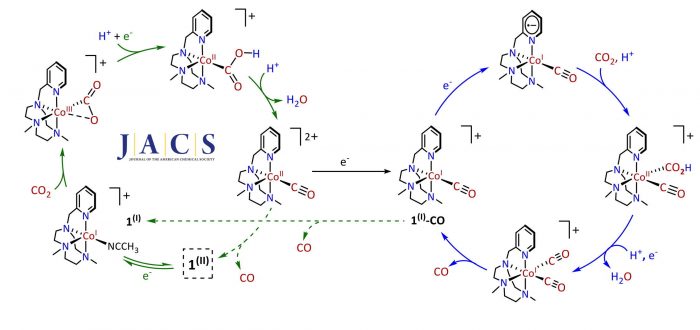The burning of fossil fuels is causing a global climatic emergency. In order to solve this crisis, it is very important to improve the efficiency of the production of renewable energies by transforming carbon dioxide into carbon-based fuels. Recently, IQCC researcher Josep M. Luis in collaboration with ICIQ’s Lloret group, determined the mechanism and bottlenecks of the carbon-dioxide reduction reaction with a model cobalt catalyst. The theoretical calculations, in combination with in situ measurements, pinpointed an elusive cobalt(I) carbonyl intermediate, which is formed very early in the reaction and is responsible for one of the most problematic bottlenecks in the reduction of carbon dioxide. The mechanistic studies allowed the identification of the bottlenecks of the process, leading to the design of a photocatalytic strategy to break the carbonyl compounds; ultimately leading to strongly improve the efficiency of the catalytic reduction of carbon dioxide. The study was recently published in J. Am. Chem. Soc.:
S. Fernández, F. Franco, C. Casadevall, V. Martin-Diaconescu, J.M. Luis, and J. Lloret-Fillol
“A Unified Electro- and Photocatalytic CO2 to CO Reduction Mechanism with Aminopyridine Cobalt Complexes”
J. Am. Chem. Soc. 2019, [], ASAP- [abstract]
DOI: 10.1021/jacs.9b06633
- sec.iqcc@udg.edu
- +34 972 41 83 57

